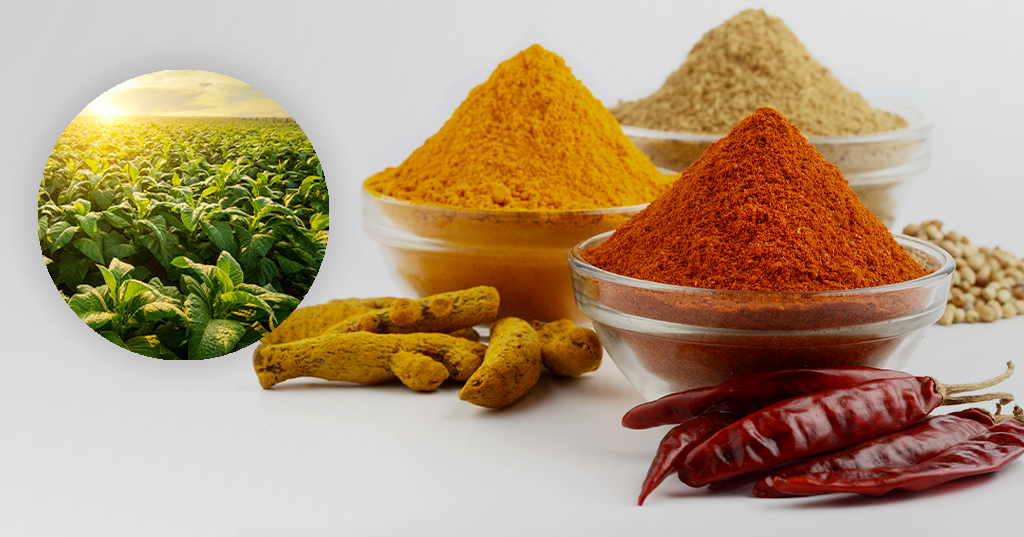
Nicotine residues in spices: EFSA has just completed the risk assessment
Nicotine is the main alkaloid in tobacco and its harmful effects on smokers, apart from addiction and habituation, are well known. However, not everyone knows that, in addition to tobacco, nicotine is also found naturally and in low concentrations in other plants of the Solanaceae family - such as the tomato, potato, aubergine and bell pepper - where it plays a defensive function against pests and herbivores. For this reason, it has been used in plant protection products or insecticides in the past and can still be found as an undesirable substance in spices, with possible health risks for consumers.
In this article, we will see what EFSA has found, following the latest risk assessment carried out in 2023 and recently published.
The biological effects of nicotine
Nicotine is a neurotoxin that acts as an agonist for acetylcholine receptors; in mammals, in low concentrations, it has an exciting effect, while in insects it is very toxic; although its use as an insecticide has been banned in Europe since 2009, it is unfortunately still used as a household remedy to get rid of garden pests, also due to incorrect information conveyed through the Internet, as well as in Third Countries.
EFSA assessment of the risks of nicotine to consumer health
The use of nicotine as an insecticide was evaluated in the framework of Directive 91/414/EEC of 15/07/1991 concerning the placing of plant protection products on the market. In 2009, however, since nicotine could not be proven safe for use as a plant protection product, the European Commission decreed that all plant protection products containing nicotine as an active substance had to be withdrawn from the market by 8th June of that year. However, no specific Maximum Residue Levels (MRLs) were set for nicotine at that time; therefore, a default MRL of 0.01 mg/kg was applied to all products. Over the years, the limits have been varied and differentiated (see Commission Reg. 2011/812), until new regulations were issued in 2023, namely Commission Reg. EU 2023/377 of 15/02/2023 (covering various food categories, including fresh herbs, edible flowers, herbal infusions, tea and spices) and Commission Reg. EU 2023/1536 of 25/07/2023 (tea, rose hips and spices), which changed the limits for nicotine in the relevant food classes.
However, monitoring data submitted to the European Commission by food business operators and Third Countries showed that under the new limits, many spices would be 'outlawed', thus proposing 0.3 mg/kg as the limit for spices. Hence, the European Commission asked EFSA to carry out a further risk assessment following both acute and chronic exposure. EFSA result was that a limit of 0.3 mg/kg is unlikely to pose a risk to consumer health, a position then adopted by the SCoPAFF (Standing Committee on Plants, Animals, Food and Feed), proposing a temporary limit of 0.3 mg/kg, to be reviewed by 22 February 2030 in the light of new information reaching the European Commission.
The limits currently in force remain those of the EU Commission Regulation 2023/1536, while the current limit for the category '0630000 Herbal Infusions', to which our products mainly refer, is 0.3 mg/kg.
Nicotine: EPO measures
As a producer of botanical extracts, EPO has always believed that research and efforts towards a more controlled and responsible supply chain are key to protecting everyone's health, and for nicotine EPO is already monitoring its extracts.
Furthermore, in line with our aim of full cooperation along the whole supply chain, EPO is asking its suppliers to investigate about the possible use of nicotine as a pesticide in their crops. After evaluation of the collected data, EPO will be able to issue a declaration of compliance.
With a view to a fruitful exchange of information between all the involved parties, EPO remains at the disposal of suppliers and customers to support them in case of doubts or if further information is needed.